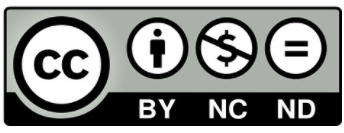Del Llanero solitario al corrector de la vida. Textos programáticos de Bolaño y Zurita
Palabras clave:
Zurita, Bolaño, textos programáticos, poesía chilena, manifiestosResumen
La literatura chilena, desde la segunda mitad del siglo XX hasta las primera décadas del siglo XXI, ha producido un corpus importante de textos programáticos (manifiestos, proclamas y artes poéticas). Entre ellos destacan “Déjenlo todo, nuevamente” de Roberto Bolaño y “¿Qué es el paraíso?” de Raúl Zurita. Su lectura conjunta, observando cómo se concibe el oficio de poeta, entrega respectivamente las figuras del llanero solitario y del corrector de la vida. La metáfora del llanero solitario define al poeta por su nomadismo de fronteras y su desplazamiento por espacios marginales donde la vida está en juego. La representación del corrector de la vida posiciona al poeta como un alterador de la versión histórica cuya nueva edición logra derrotar la violencia.
Descargas
Referencias
Bolaño, Roberto. “Déjenlo todo, nuevamente. Primer manifiesto del Movimiento infrarrealista”. 1976. Correspondencia Infra, revista menstrual (sic) del movimiento infrarrealista 1. México, 1977: 5. Reproducido en Bolaño Infra. 1975-1977:
los años que inspiraron Los detectives salvajes. Comp. Montserrat Madariaga. Santiago: RIL, 2010.
Chueca, Luis. “Alcances y límites del proyecto vanguardista de Hora Zero”. Intermezzo Tropical 4 (2006): 29-45.
Dorfman, Ariel. “El llanero sin antifaz”. La Quinta Rueda 1 (1972): 8.
Durand, Gilbert. Las estructuras antropológicas de lo imaginario. Madrid: Taurus, 1981.
Espinosa, Patricia. Roberto Bolaño: la posibilidad de una comunidad. Santiago: Recortes Críticos, 2014.
Foucault, Michel. “¿Qué es un autor?” Litoral 25/26 (1998).
Galindo, Óscar. “Metatextos e imaginarios identitarios en la literatura chilena (1950-1970)”. Estudios Filológicos 43 (2008): 101-114.
Gómez, Carmen. “¿Qué es el género programático?”. Revista de Filología Alemana 16 (2008): 31-49.
Jarillo, Cristina. Manifiesto y vanguardia: los manifiestos del futurismo italiano, dadá y el surrealismo. Bilbao: Universidad del País Vasco, 2010.
Lizama, Patricio y María Inés Zaldívar, eds. Las vanguardias literarias en Chile. Bibliografía y antología crítica. Madrid: Iberoamericana, 2009.
Ramírez Ruiz, Juan. Un par de vueltas por la realidad. Lima: Ediciones del movimiento Hora Zero, 1971.
Rubio, Rafael. “Presentación del libro Qué es el paraíso. Antología de Raúl Zurita. Selección y prólogo de Rafael Rubio. Santiago: Ediciones Tácitas, 2013. Proyecto patrimonio. Escritores y poetas en español. http://letras.mysite.com/rrub190513.html>.
Sánchez, Cecilia. El conflicto entre la letra y la escritura. Legalidades/contralegalidades de la comunidad de la lengua en Hispano-América y América-Latina. Santiago: Fondo de Cultura Económica, 2013.
Vásquez, Ainhoa. “Del infrarrealismo al real visceralismo: Bolaño y la autocrítica de un marginal”. Alpha 39 (2014): 57-68.
Zurita, Raúl. Raúl Zurita. Escritura material. Santiago: Ograma-Ministerio de Relaciones Exteriores de Chile, 2015.
Zurita, Raúl. “¿Qué es el paraíso?”. CAL 3, 1979: 20. Reproducido en Zurita. Santiago: Ediciones Universidad Diego Portales, 2011.
Zurita, Raúl. “Toma 2666”. Zurita. Santiago: Ediciones Universidad Diego Portales, 2011.
Zurita, Raúl. “Sinfonía final”. La vida nueva. Santiago: Universitaria, 1994.
Publicado
Número
Sección
Licencia
Derechos de autor 2022 Revista de humanidades (Santiago. En línea)

Esta obra está bajo una licencia internacional Creative Commons Atribución-NoComercial-SinDerivadas 4.0.
Usted es libre de:
Compartir — copiar y redistribuir el material en cualquier medio o formato
La licenciante no puede revocar estas libertades en tanto usted siga los términos de la licencia
Bajo los siguientes términos:
-
Atribución — Usted debe dar crédito de manera adecuada, brindar un enlace a la licencia, e indicar si se han realizado cambios. Puede hacerlo en cualquier forma razonable, pero no de forma tal que sugiera que usted o su uso tienen el apoyo de la licenciante.
-
NoComercial — Usted no puede hacer uso del material con propósitos comerciales.
-
SinDerivadas — Si remezcla, transforma o crea a partir del material, no podrá distribuir el material modificado.
- No hay restricciones adicionales — No puede aplicar términos legales ni medidas tecnológicas que restrinjan legalmente a otras a hacer cualquier uso permitido por la licencia.
Avisos:
- No tiene que cumplir con la licencia para elementos del materiale en el dominio público o cuando su uso esté permitido por una excepción o limitación aplicable.
- No se dan garantías. La licencia podría no darle todos los permisos que necesita para el uso que tenga previsto. Por ejemplo, otros derechos como publicidad, privacidad, o derechos morales pueden limitar la forma en que utilice el material.












